
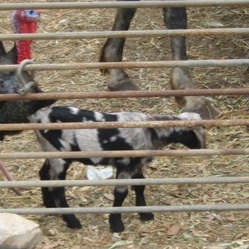
Green Prophet’s new writer Rebecca shares her personal experience raising 5 female goats. She shares an easy goat cheese recipe too!
The first goats arrived to our garden by chance. Our friends needed to get rid of their goats urgently as their neighbours were complaining about the baahing. We weren’t sure what that meant, but we jumped at the chance. My husband and I were both curious, as well as in a genuine need to enjoy a morning coffee that didn’t have soy milk in it.
They were strange and nervous creatures, but the “baahing” didn’t bother us and we later discovered that the “baahing” stopped completely when one of the baby goats was reunited with her mother and returned to nurse.
And so began our journey with learning how to raise and milk our new friends and how to do it in the most efficient, yet humane way.
Goats are really sweet, fairly intelligent creatures. But what got me the most, was their incredible desire and ability to communicate with us. They would bleat in distress if they wanted to get out of their pen and go for a walk, or come back in to nurse or be nursed.
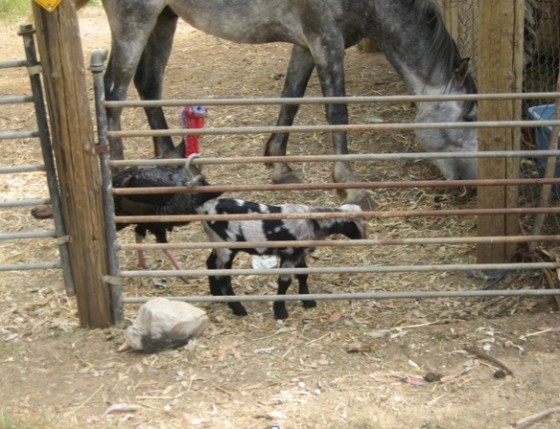 Baby goat hanging out with the chicken and horse.
Baby goat hanging out with the chicken and horse.
Once when one of our goats was injured and bleeding, she came and sat by our front door, something that none of them ever do. They greet us hello when we arrive home and offer joyful cries at the site of interesting food. On the other hand, they show no expressions on their faces and will try to eat and chew most things that they see.
They tend to stick together as a group, always selecting the eldest and strongest goat to be their leader. We once found them, walking around our local synagogue, united as usual and chewing inappropriate things.
Milking 3 goats under 15
Milking them was difficult at first, but Asaf (my husband) got the hang of it quickly and knows how to milk three goats in under 15 minutes. The trick is having them respect and like you, but the ability to push them around a little when they misbehave. I have found the domineering factor a little difficult and when trying to milk our largest goat, I found myself holding on to her horns and being dragged across the garden.
We currently have five female goats. They eat a grain mix that we buy them as well as our leftover household scraps. We have a small bin that we keep in the kitchen, and all fruit, vegetables and dry grains go in there for the goats. Anything too wet or harsh, like cooked rice or eggshells go to the chickens. They need to live in an enclosed area as they have been known to destroy our garden and consume all our young trees if left unattended for even a few minutes.
Goats, like many other animals that are kept as livestock, go into heat periodically during the months of autumn, although this can last longer in Israel and the Middle East where it’s warm year round. They are pregnant for a duration of five months so they usually give birth towards the end of winter.
The birth of goat twins
Their births are incredible, fast and quiet. One of our goats once birthed twins at the side of the garden in the exact time it took us to finish our morning our coffee. The male baby goat needs to nurse for a few months, after which he begins to mount and bother his mother- this is when we separate them. We allow the female goats to nurse for as long as they need, this can be almost a year.
After that, the milk can be shared between them and us. Watching this overwhelming process has made me think twice about buying industrialised goat’s milk during the winter. I know that this is a time when baby goats most need their mothers to themselves and that we can share the milk once again around spring time.
This year, we milked three goats once a day. This produced almost three litres. We usually sold 1 litre of unpasteurised milk for 10NIS (about $3), which is a good deal although our customers had to put up with a lot of inconsistency. We made fantastic cheese with the leftover milk. This was our best year of cheese yet. It’s possible to make with all the commercial varieties of goat’s milk available today.
Fantastic (and easy) goat cheese recipe:
• Place milk (doesn’t have to be super fresh) in a pot and heat until 75˚C, (milk will just be starting to bubble)
• For every litre of milk add 1.5 tablespoons of good quality organic yoghurt (yes it does make a difference) as well as 2 tablespoons of vinegar.
• Allow these to cook together for a few more minutes, turn it off and let it cool down completely in the pot. (on these cold winter nights you can even leave it out all night)
• The cheese should float to the top, take this out and leave it in a large tea strainer. Add sea salt and other flavours at this stage and then allow the cheese to sit in the strainer that needs to be placed over a bowl.
• Refrigerate for about two days, before transferring to a plastic container with a lid.
• Comes out like a cross between cottage cheese and ricotta!
Yum.
So there’s a little sharing on raising goats in my garden in Israel. I hope you enjoy it and feel free to ask me about my experience in the comments below – or email me [email protected].
Read more on goats:
Israel’s Organic Goats With The Wind
Organic Goat Herding With WWOOF – The Podcast

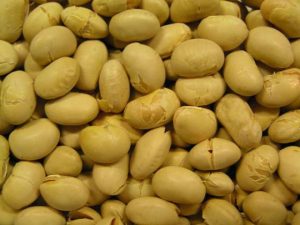
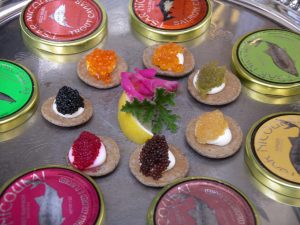
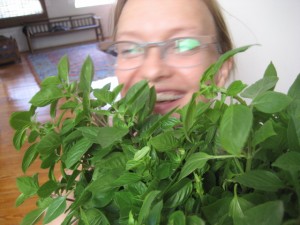
Do you make the cheese with raw milk? Do you think the recipe would work if the milk was pasteurized. It’s tough for me to get raw milk regularly in New York.
You make it sound like goat-rearing is pretty easy. How do you keep the milk flowing? Do the females need to be constantly child-bearing?
You can keep the milk flowing by ensuring that you milk at regular hours- e.g. every afternoon at around the same time. It is best to get the females pregnant once a year, that keeps their bodies in a healthy cycle. This year we haven’t mated our females yet and their milk supply is lower and they seem unsettled. We will probably mate them this week, I will keep you updated.